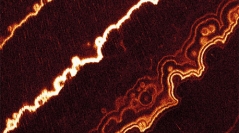

 Comptes Rendus Palevol
16 (5-6) - Pages 557-571
Comptes Rendus Palevol
16 (5-6) - Pages 557-571Accounts of dentine microstructure are less well established in the primate life history literature than those of enamel microstructure. The aim of this paper is to draw some basic comparisons between enamel and dentine, but at the same time to show how dentine microstructure can make a major but different contribution to reconstructing past lives than enamel can. Dentine has both an organic and an inorganic component. The organic component contains growth factors, stable isotopes and DNA that survive long after death. The mineral component contains trace elements and preserves an incremental record of tooth growth. These can be used to put a time scale to many past events when the chemistry or microstructure of dentine has become altered during tooth growth. Dentine microstructure allows us to reconstruct tooth root growth in the past and has contributed to a fuller understanding of the modular nature of developing dentitions among hominoids and hominins.
Dental development, Dental microstructure, Tooth histology, Dentine, Hominins, Life history